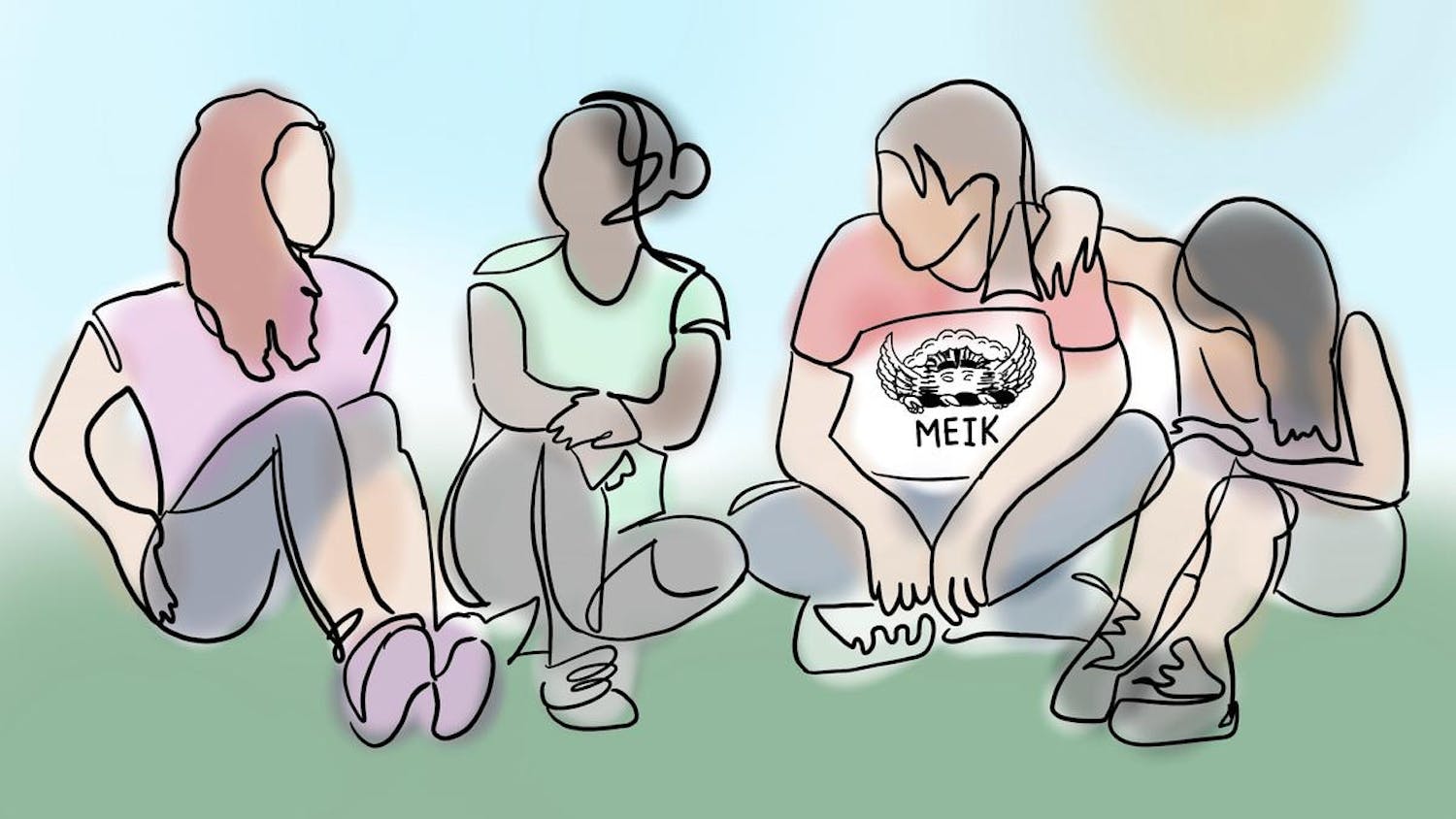Shriram Krishnamurthi walked into the Center for Information Technology at 8:30 a.m. to set up the broadcasting system for his first day teaching hybrid classes of the semester. He and technology specialists in the CIT didn’t finish until 9:50 a.m., ten minutes before the start of Krishnamurthi’s class, CSCI 1730: “Design and Implementation of Programming Languages.”
“I don't generally get intimidated by technology,” Krishnamurthi, a professor of computer science, told The Herald. But, since setting up for class involved juggling zoom links, document cameras and screen sharing, “I went to teach in class completely frazzled.”
Like Krishnamurthi, other University professors have navigated unfamiliar territory teaching hybrid courses – classes that are simultaneously in-person and online, since the University began allowing some in-person instruction on Oct. 5.
Many professors shared their experiences with The Herald on the difficulties of teaching students who are both in their classrooms and on their screens, which has led some to return to fully online formats.
Assistant Professor of Archaeology and Classics Candace Rice originally planned to teach a course this semester on maritime archaeology. She scheduled a multitude of field trips for the class to visit harbors on the coastline. But when taking field trips no longer became an option due to the COVID-19 pandemic, Rice concluded that she and the students would be happier if she redesigned the class for a pandemic world.
One of Rice’s biggest concerns when designing a hybrid class was how to ensure a high quality experience for both in-person and remote students in a way that “wasn't favoring one group over the other.”
Her solution was ARCH 0526: “Behind Closed Doors? Domestic Life in the Roman World.” The class incorporates three different modes of instruction. Mondays are fully online, Wednesdays involve collaborative discussion posts on Canvas and Fridays are discussion-based classes run via a hybrid instruction in Rhode Island Hall.
On Fridays, two cameras — one facing the front and one facing the back of the room — broadcast the discussion to members of the class studying remotely.
Rice hopes this format allows for higher levels of student engagement, no matter where a student is learning from this semester.
Normally, as part of her class, Rice would pass around objects from the Joukowsky Institute for Archaeology and the Ancient World’s vault collection “so students get to actually touch and play with ancient objects.”
As an alternative in her hybrid class, Rice leverages digital 3D models of artifacts, such as collections from a Roman site in Austria, which she says has worked well in engaging students.
But not all hybrid classes have found similar success. Katherine Van Riper ’23 is taking ENGL 1361P: “Shakespeare’s Girls” with Assistant Professor of English Connie Scozzaro.
The discussion-based class attempted hybrid learning, with half of the students spaced around Metcalf Hall Auditorium and the other half online. But the people online couldn’t hear the students, so students had to walk up to a microphone in the front of a lecture hall whenever they wanted to speak, Van Riper said. “If we did say something without doing that, then Professor Scozzaro had to repeat it all into her microphone.”
“It was just hard to get discussions going and it was frustrating for a professor to make it work,” Van Riper said. The following week, the class went fully online.
Professor of Classics and History Graham Oliver teaches CLAS 1130: “The Fragility of Life in Ancient Greece” via hybrid instruction. He said that while both students “online and in the classroom feel ... as engaged as when the class was fully online” before Oct. 5, “it’s not so easy to do breakout rooms” in person.
Oliver added that he could try breakout rooms for the students attending in person, but students would be talking across the room to each other.
Scozzaro did not respond to requests for comment.
Paul Biberstein ’23, who is taking Krishnamurthi’s class in person and has taken another class with him previously, says that the professor’s lecture style involves a lot of participation. He asks “quick off-the-cuff questions” without expecting students to raise their hands, and often requests that they turn to their neighbors and talk about problems.
“Even though there’s analogs for that virtually, you can’t fully recreate that experience online,” Biberstein said.
“The problem in person is they’re all spread all across the room,” Krishnamurthi said. “There’s no neighbor … and the only way you can talk to somebody six feet away is yelling a bit. So that dynamic is completely destroyed.”
Wearing a mask in a hybrid class is also challenging. Krishnamurhti’s teaching style involves mouthing the answers to difficult questions he poses to students. “I’m trying to do it through my (face) covering,” but it doesn’t work as effectively, he said. “I feel as though someone just stole a useful technique away from me.”
Masks also impede the instructional methods of Benjamin Driver GS, who teaches GREK 0300: “Introduction to Greek Literature,” but has also taught high school French.
When teaching a language, he wants students to be able to view how he shapes his mouth when he pronounces certain words and sounds.
While Driver admits this isn’t as much of a barrier when teaching ancient Greek (since it is not a spoken language), the masks still are as much of a metaphorical barrier to connecting with the class as a physical one. “The thing that I think is mostly lost is that sense of community. There’s a lot of things like trust that are built through (making) a joke and someone knows you’re telling a joke because you’re smiling.”
Usually, Driver assigns a reading in Greek for homework. Then the class would reconvene in person to discuss it and a class leader would facilitate the class through text readings every day, “which also engages them more.”
Like Driver, Rice also was concerned about creating a sense of community and engagement in the class this semester, having felt that part of that was lost when the University went fully online in March.
Rice knows that she cannot fully recreate the in-person experience, but she feels that the changes she has made to the course have been largely successful. “The students are engaged, and that makes all the difference in the world,” she said. “I miss seeing everyone in person so much but it's nice to be able to see their faces and have them interact online.”

ADVERTISEMENT




